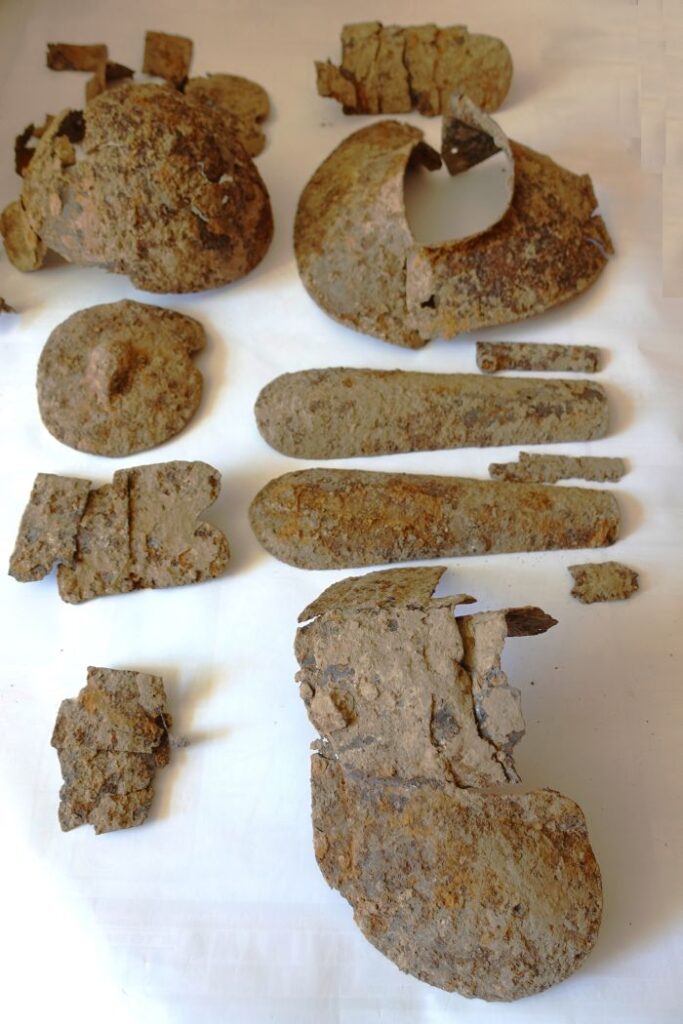A remarkable discovery in a seemingly ordinary Polish field has rekindled memories of a bygone era. Patryk Chmielewski, a metal detectorist and YouTuber known as “Profesor Detektorysta” (Professor Detectorist), stumbled upon a partially intact set of 17th-century hussar armor.
The find, unearthed just two feet (60 centimeters) below the surface in the village of Mikułowice, southeast Poland, is in surprisingly good condition for its age. It serves as a tangible reminder of the hussars, a formidable light cavalry unit that played a pivotal role in Polish and European military history.
Hussars were renowned for their elite status, recruited from the ranks of the wealthiest Polish nobility. Mounted on swift horses, they were masters of horsemanship. Their most striking feature, however, were the iconic “wings” – large wooden frames adorned with eagle feathers, either attached to their backs or saddles. The thunderous flapping sound produced by these wings during a charge was a deliberate tactic, meant to frighten and disorient enemy horses.
Beyond the imposing wings, hussars were a colorful spectacle. They donned elaborate costumes, often sporting leopard or similar animal skins as cloaks over their armor’s shoulder pieces (pauldrons).
Chmielewski’s discovery unfolded during a routine metal detecting session in a plowed field. The initial beep of his detector led him to unearth several metal pieces. Recognizing their potential significance, he brought them to the Provincial Office for the Protection of Monuments.
Experts at the office confirmed Chmielewski’s hunch – the metal fragments were indeed parts of a hussar’s armor. Dr. Hab. Marek Florek, from the Sandomierz branch of the office, elaborated, “While incomplete, the find includes a left shoulder pad, bracers for the forearms, and a semi-circular helmet with protective features for the cheeks, neck, and nape.” Notably absent were the cuirass (chest and back plates) – a crucial component of the armor.
The lack of ornate embellishments suggests the armor was locally made, likely commissioned by a regional nobleman. Researchers estimate it dates back to the first half of the 17th century, based on the helmet’s design. Further confirmation of the exact age awaits the completion of conservation work, which will also address the armor’s minor corrosion.

Following its restoration, the hussar armor will find a permanent home at the Sandomierz Castle Museum. This discovery serves not only as a captivating archaeological find but also as a testament to the rich military history and cultural heritage of Poland. The echo of the winged hussars, once a symbol of power and prestige, continues to resonate centuries later.
